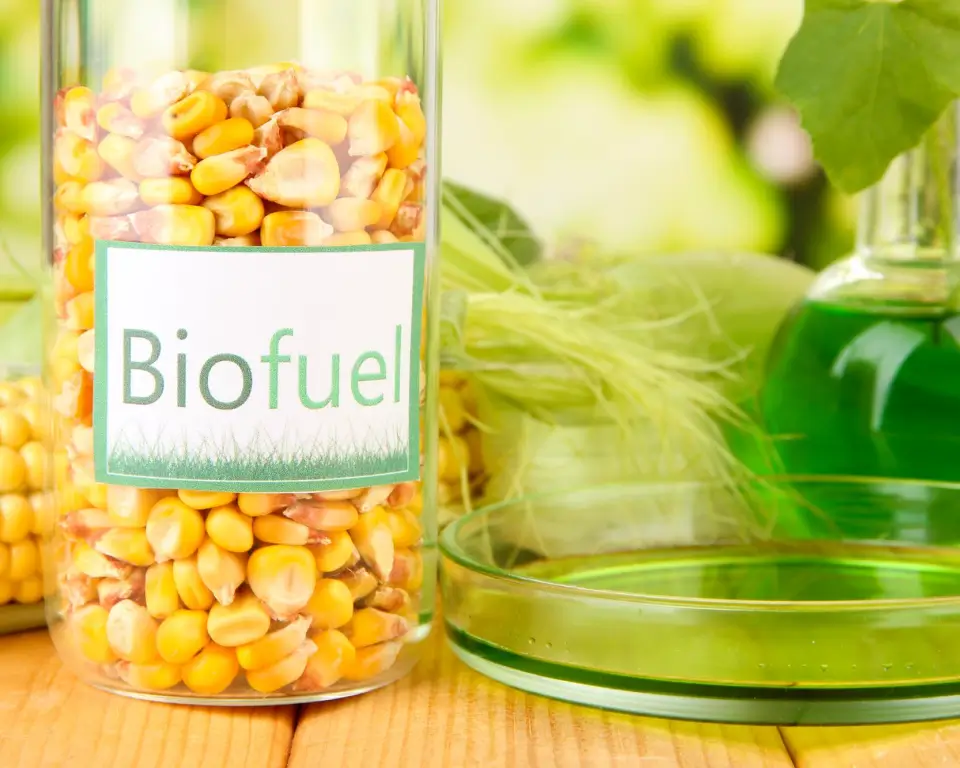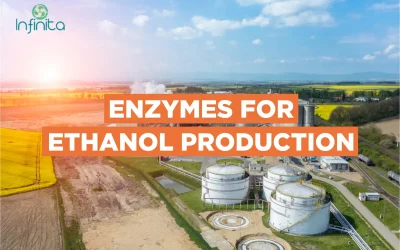Effective Enzymes For Second-Generation Biofuel
Lignocellulosic biomass came into existence a few decades ago, but it still happens to be relatively immature in today’s time. This, however, poses a significant risk in terms of being commercially viable. The second-generation biofuels are, however, helpful for coping up with the different aspects.
The search for alternative fuels from that of the biomass is still prevalent in today’s time. One enzyme does not degrade the biomass, which is why many companies are now focusing on the heterogeneous nature of biomass. Several factors need to be considered to determine the applications of second-generation biofuel.
What Are Second-Generation Biofuels?
The second-generation biofuels are made out of different kinds of non-food biomass such as agricultural residue, waste cooking oil, and wooden chips. It is necessary to consider the residues and work on the production of biomass.
One of the most used enzymes in the biotechnology sector is the Trichoderma reesei. Several alternatives are being applied to increase the productivity around the biofactory of enzymes. The researchers have also worked on implementing different techniques that offer support across speeding the process.
Second-Generation Biofuels And Renewable Energy
Renewable energy has become extremely popular in today’s time. Most businesses are focusing on various modes, such as geothermal, solar, and wind. However, to ensure a sustainable model of living, extreme measures are being implemented. The severe use of non-renewable sources of energy is increasing the fear of depletion. In times like this, it is necessary to ensure better replacement of these materials.
Bioethanol is one of the common biomass used in agricultural services. The first generation bioethanol used in croplands had been able to increase greenhouse gas emissions. However, this is eventually increasing the risk of damage. On the other hand, corn based ethanol, which is a prominent enzyme for second-generation biofuel, has been able to cater to the needs. This first-generation bioethanol was commercially used.
The emission of greenhouse gases is dependent on biomass, which eventually increases land usage. Carbon emission, however, cannot be reduced by reducing the risk of fossil fuels. As a result, experts suggest being extremely careful with the use of biomass. The right biomass will eventually cater to the production of biofuel. Infinite Biotech is committed to bringing about the best type of second-generation biofuel.
Lignocellulosic Biomass
Being complex in nature, lignocellulosic biomass is made up of three different components like lignin, cellulose, and hemicellulose. Cellulose and hemicellulose belong to polysaccharides, which are complex in nature because of the monomeric sugars.
During fractionation, hemicellulose and cellulose can help build monomeric sugars, which further helps in the development of second-generation biofuels. Lignin is essential for the joining of substances like cellulose and hemicellulose. Depending on the nature of biomass, different types of treatments are applied for the hydrolysis of the lignocellulosic biomass. This is also beneficial for fermentable sugars, which are friendly to the environment.
Why Are Second-Generation Biofuels Important?
Fossil fuels are a non-sustainable form of energy, which is why it is necessary to keep a check on it. Burning fossil fuels can lead to an increase in carbon dioxide in the atmosphere. This is another factor responsible for global warming. As a result, businesses and governments are focused on finding a different renewable and sustainable form of energy that can help produce biological sources.
The first-generation biofuels are leading the source of concern. Using and producing first-generation biofuels are extremely expensive and also requires improving energy security. As a result, these issues can rise to be controversial.
The biofuels produced from different lignocellulosic biomass can act as the best second-generation biofuels. These are economically beneficial. Furthermore, several challenges arrive in the production of first-generation biofuels that need to be addressed. One of the main reasons everyone is switching to second-generation biofuels is that it does not pose any threat or competition with food. The technology through which the second-generation biofuel is being produced is being extremely helpful.
Several technical barriers are eventually making the production and uneconomical process. Furthermore, different research and development activities are being developed to ensure the production of second-generation biofuels an economical process. Other processes that are being adopted to ensure cost-effective biofuel production include crops, agricultural residues, and forest residues.
In short, the common advantages of the second generation biofuel include the following
- Friendly for environment
- Offers social and economic security
- No competition with food
The Enzyme For Second-Generation Biofuel
Two different processes are used for the production of the second generation. However, there are two different processes commonly used for the production. These include
Biochemical: the microorganisms or enzymes are used in the saccharification process for the lignocellulosic biomass. This helps to build up sugar even before the fermentation process of ethanol. The biochemical process is one of the most commonly used processes for developing enzymes for second-generation biofuel.
Thermo-chemical: In this process, gasification or pyrolysis is used for the production of second-generation enzymes. The syngas that is produced is further used for carbon monoxide and hydrogen. As a result, the thermo-chemical process helps develop aviation fuels and synthetic diesel.
Do We Need Enzymes?
The lignocellulosic plant biomass is made of three layers, the primary cell wall, secondary cell wall, and the middle layer or lamella.
Every layer has a different function to serve. It is necessary to consider the chemical composition of each of the layers. The function and composition further differ depending on the various layers and species of the plants. The middle lamella is made of pectic substances, which act as cement for joining the two different cell walls together. The primary cell wall is rich in polysaccharides and is flexible, along with being thin.
The common polysaccharides through which the primary cell wall are made include the following
Cellulose- This polysaccharide is one of the essential ones that is made upon 1,4-linked beta-D-glucose residues.
Pectin- Comparatively, pectin is one of the most complex polysaccharides having a composition of 1,4-linked alpha-D-galacturonic acid. The three different classifications of the pectic polysaccharides include- substituted galacturonic, rhamnogalacturonan, and homogalacturonan. Due to these different polysaccharide presences, the composition of primary cell walls varies depending on the development and plant growth.
Hemicellulose- Hemicellulose is the heterogeneous polymer made mostly because of xylan. The other hemicelluloses are glucomannan, galactomannan, and arabinoxylan, which are also found in the different secondary as well as primary cell walls.
What are the enzymes used for the production of second-generation enzymes?
These second-generation enzymes are helpful for the hydrolysis of lignocellulosic biomass. As it is a complex substance, one enzyme will eventually not be able to cater to it.
The different processes that helped in the production of second-generation enzymes include the following
- Cellulases
- Xylanases
- Peroxidase
- Laccases
- Microbial glycosyl hydrolases
What Factors Affect Enzymatic Hydrolysis?
The different factors that contribute to the enzymatic hydrolysis include the following
- Surfactants
- Temperature
- Inhibitors of the enzymatic hydrolysis
Conclusion
The hydrolysis process of enzymes for second-generation biofuel will eventually vary. However, it is a complex process for providing an environment-friendly approach.
Several research in the industry caters to the needs, thereby providing fulfilment in the research sector. These enzymes provide the saccharification process without the pretreatment, which eventually will become a reality later. Hence, make sure to do your research before choosing the enzyme for second generation biofuel.


